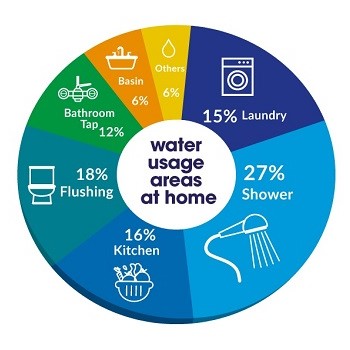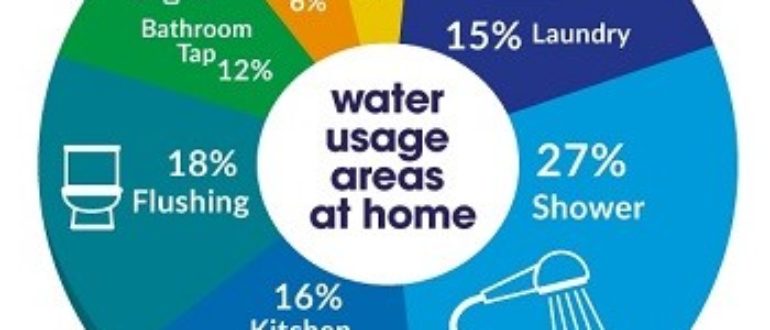Recent findings show us that the average Australian household consumes about 340 litres of water per person, per day. And, though this is the average, some households in dry, inland areas go through upwards of 800 litres, which is nearly equivalent to 5,410 small glasses of water.
 If we look at total water consumption by state for the whole year of 2014 to 2015, in gigalitres for both industries and households, we find that New South Wales had used the most at 6,329 gigalitres (GL). Second was Victoria with a total use of 4,215 GL, third was Queensland with 3,748 GL, fourth Western Australia with 1,484, fifth South Australia with 1,031, sixth Tasmania with 367, and last, of course, Northern Territory with 153 GL and Australian Capital Territory with 48 GL. All states and territories experienced a decrease in total water use compared to the previous year, except in areas where the agriculture industry actually caused an increase due to increased production. To put things into perspective specifically for households, the total water consumption across Australia from 2014 to 15 was 17,375 GL, and of this, a full 15,552 GL were used primarily by industries, and only 1,852 GL were used by households.
If we look at total water consumption by state for the whole year of 2014 to 2015, in gigalitres for both industries and households, we find that New South Wales had used the most at 6,329 gigalitres (GL). Second was Victoria with a total use of 4,215 GL, third was Queensland with 3,748 GL, fourth Western Australia with 1,484, fifth South Australia with 1,031, sixth Tasmania with 367, and last, of course, Northern Territory with 153 GL and Australian Capital Territory with 48 GL. All states and territories experienced a decrease in total water use compared to the previous year, except in areas where the agriculture industry actually caused an increase due to increased production. To put things into perspective specifically for households, the total water consumption across Australia from 2014 to 15 was 17,375 GL, and of this, a full 15,552 GL were used primarily by industries, and only 1,852 GL were used by households.
The use of water in households is pretty similar across all states and territories. In some government-conducted surveys done across the country, it was found that about 35 percent of water used by households goes strictly to gardening and nearly 19 percent is used just to flush the toilets. If we look at this in more real numbers, this means that at least 352 GL are used to flush household toilets every year. In smaller, everyday terms, though, the average toilet uses 12 litres of water per every single flush, and you can only imagine how this can add up to such great numbers.
The total consumption of water in Australia was, in fact, down 7 percent in 2014 to 2015 compared to 2013 to 14. It is estimated that future water consumption will decrease as well, so long as measures are taken at home to conserve and be environmentally friendly. Becoming conscious of the amount of water you use daily is one simple step that can be taken with decreasing water consumption, and changing the amount of water going down the drain during daily activities can be of help. In addition, relying on rainwater for gardening more and relying on water treatments less can really make a change.

